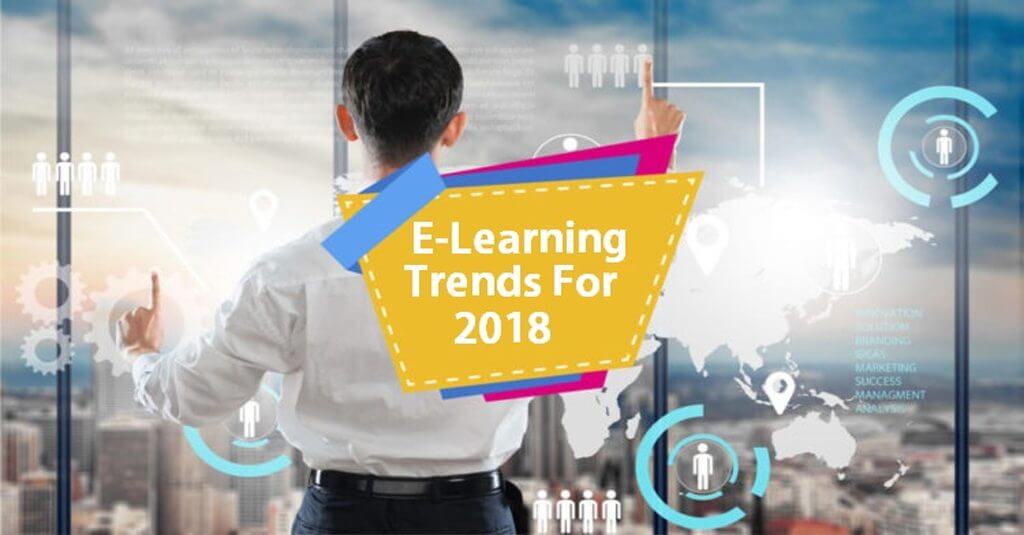We live in very interesting times – technology is now getting omnipresent around us, we are interconnected at global level like never before, and thanks to all the search engines and bots and calendars and what not, we don’t want to remember anything, but be given the information we need just at the right time, and preferably the information should reach us on its own without us telling anyone/anything what we need!
These trends which are shaping our day to day lives are also impacting what we, as employees, want/expect from our organizations, and that coupled with ever increasing pressures on businesses to increase efficiencies and sales, to decrease costs due to global pressures is leading to newer expectations from L&D teams as well. So, this is how we see 2018 and beyond shaping for L&D teams and learning industry as a whole –
1. Focus on business impact
In most organizations, L&D teams are happy conducting annual skill gaps, creating training calendars to plug those gaps, delivering the same and other training requirements that come up from business during the year. Sadly, this has very little impact on business results. By the time a training is delivered, which can range from a month to a year from the time training need is analyzed, an employee with the skill gap will continue to perform at sub-par level, and even after the training is delivered, if the knowledge gained is not immediately implemented, then the knowledge gained is lost leading to all the training dollars going down the drain.
Thankfully, more and more L&D Heads around the globe are realizing the fallacy of current model and are not happy anymore with the status quo. What is emerging is the need to analyze skill gaps basis an employee’s performance in real time, and provide just-in-time training resources, so that real business impact is created which is immediately visible in numbers (sales, quality, reduced error rates, increased efficiency, better customer feedback etc.).
2. Data will be the mantra
To realize real time gap analysis, visibility to org level data is the key. Again, thankfully, with cloud infrastructure becoming a default for most IT implementations, we now have IT systems that are not in some black box somewhere, but are deployed on cloud and can talk to each other once the IT Department is taken into confidence.
With real time performance data now becoming available to L&D/HR, and map of competencies with KRAs already available with them, just-in-time training asset delivery to a learner then becomes a function of creating intelligent algorithms which can map performance/skill gap with relevant training asset (which can be as elaborate as a face-to-face training intervention to e-course to some byte sized training assets or a OTJ mentor alignment).
3. More focus on training extended workforce
All retail customers facing medium to large businesses have extended workforce, which really are the ones who get in business and are a face of the organization as far as the customer is concerned. They thus become a critical stakeholder in such an organization’s success.
Extended workforce’s training, thus far, is mostly limited to conducting a train-the-trainer session for partner trainer, who then goes and delivers training in the organization. This often leads to inconsistency and delays, thus negatively impacting the brand and achievement of training objectives. When it comes to e-learning delivery to the extended workforce, most systems are not rightly designed to work with the hierarchy and workflow structures that are needed for them.
Few learning systems, including G-Cube’s LMS, now offers specialized product for extended workforce training at the right price (since this workforce can run into tens of thousands across the globe, cost of learning system deployment and maintenance becomes critical). We thus see that 2018 will take external workforce training more effectively, resulting in increased employee efficiency and business growth.
4. Increasing scope for Augmented Reality
Fun thing with technology is that it is always giving us tools to try new things to increase learning delivery effectiveness. From projector slides to PowerPoint to Flash to Videos and HTML5, last couple of decades have seen quite a few changes in how learning content has been designed and delivered.
Virtual Reality (VR) and Augmented Reality (AR) are the latest additions to the options array. While we believe that mass adoption of VR is still a couple of years away due to hardware costs and fidelity issues, we see a definite possibility of a good uptake of Augmented Reality (AR) in 2018. Awareness of AR has reached right threshold level, resulting in innovative learning solutions to support an increasing number of opportunities across industries, with G-Cube also taking up some very interesting AR based e-Learning content development projects for its customers which resulted in exceptional learning experience for the audience.
Conclusion
2018 is the year which promises to cherish new advancements in technologies, methods and strategies, thereby making learning more fun and engaging. It is now the turn of companies from different industry verticals to implement these changes and innovations to educate their personnel efficiently. Ultimately, the most sought-after learning trends we have discussed above will lead to a smarter and skillful workforce.








